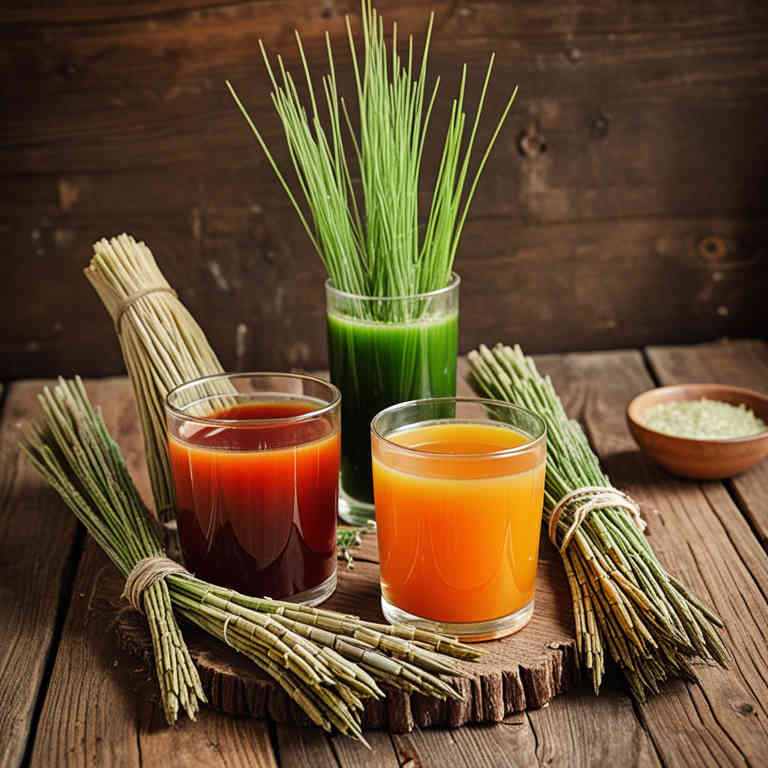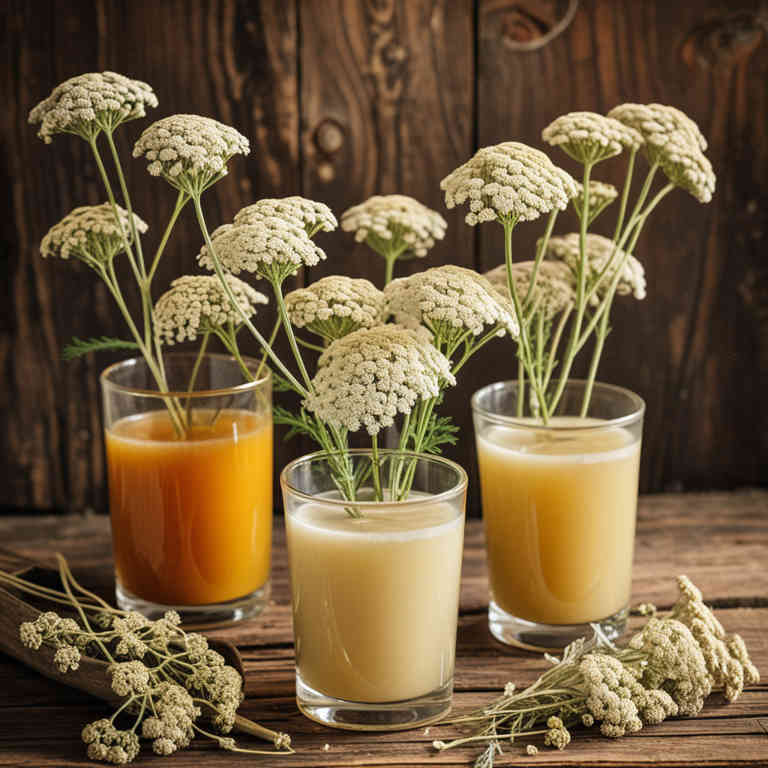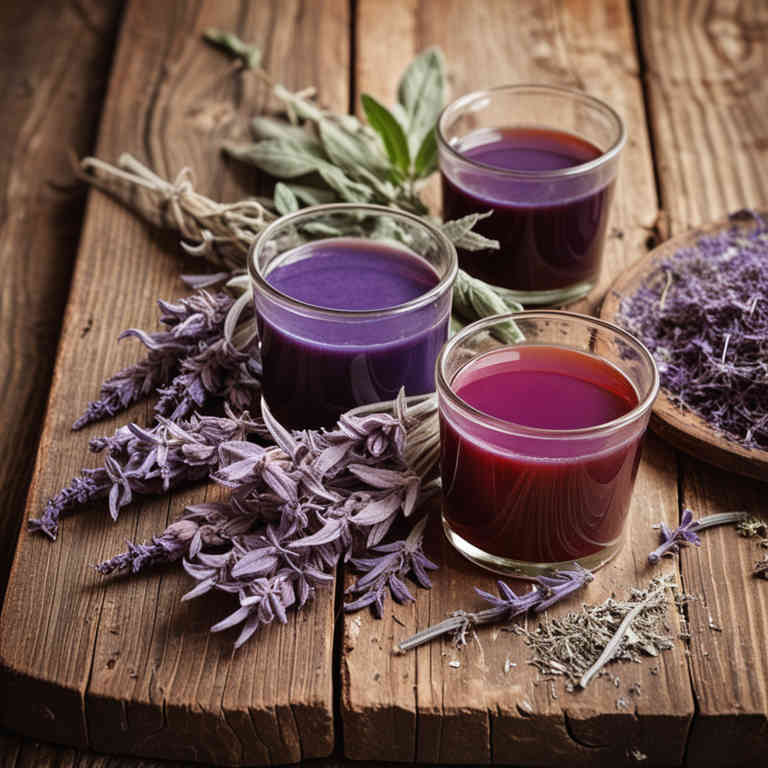10 Best Herbal Juices For Foot Pain

Herbal juices have gained popularity as natural remedies for various health issues, including foot pain.
Certain herbs such as ginger, turmeric, and willow bark are known for their anti-inflammatory and pain-relieving properties, making them beneficial when consumed as juices. These herbal juices can help reduce swelling and discomfort in the feet by promoting circulation and reducing inflammation. However, it's important to consult a healthcare professional before using herbal remedies, especially if you have underlying health conditions or are taking medications.
While herbal juices may offer some relief, they should not replace conventional medical treatments for persistent or severe foot pain.
FREE Herb Drying Checklist
How to make sure every batch retains maximum flavor, color, and aroma without the risk of mold or over-drying. Eliminate guesswork and trial-and-error, making herb drying faster, easier, and more efficient every time.
Table of Contents
1. Zingiber officinale

Zingiber officinale, commonly known as ginger, has been traditionally used for its anti-inflammatory and analgesic properties, making it a popular ingredient in herbal juices for alleviating foot pain.
When consumed as part of a juice, ginger can help reduce swelling and discomfort associated with conditions like plantar fasciitis or arthritis in the feet. The active compounds in ginger, such as gingerol and shogaol, work by inhibiting inflammatory pathways in the body, thereby easing pain and promoting healing. To prepare a ginger herbal juice, fresh ginger root is typically grated and blended with other soothing ingredients like turmeric, lemon, or honey.
Regular consumption of this juice may offer natural relief for chronic foot pain, though it is advisable to consult a healthcare professional for persistent or severe conditions.
2. Urtica dioica

Urtica dioica, commonly known as stinging nettle, has been traditionally used for its medicinal properties, including its potential to alleviate foot pain.
When prepared as a herbal juice, stinging nettle is believed to reduce inflammation and ease discomfort associated with conditions like plantar fasciitis or arthritis in the feet. The juice is typically made by juicing fresh leaves, which contain compounds such as flavonoids and silica that may support tissue repair and reduce pain. However, it is important to note that while some individuals report relief, scientific evidence supporting its effectiveness for foot pain is limited.
As with any herbal remedy, it is advisable to consult a healthcare professional before incorporating stinging nettle juice into a treatment plan for foot pain.
3. Cnicus benedictus

Cnicus benedictus, commonly known as blessed thistle, has been traditionally used in herbal medicine for its potential anti-inflammatory and analgesic properties.
When prepared as a herbal juice, it may help alleviate foot pain by reducing inflammation and promoting circulation in the affected areas. The juice is often consumed internally, though some people apply it topically to the skin for localized relief. While scientific research on its efficacy for foot pain is limited, many users report positive effects from regular use.
As with any herbal remedy, it is advisable to consult a healthcare professional before incorporating Cnicus benedictus into a treatment regimen for foot pain.
4. Curcuma longa

Curcuma longa, commonly known as turmeric, has been traditionally used for its anti-inflammatory and antioxidant properties, making it a popular ingredient in herbal juices for alleviating foot pain.
The active compound in turmeric, curcumin, helps reduce inflammation and pain by inhibiting inflammatory pathways in the body. When consumed as part of a herbal juice, curcuma longa can support joint health and ease discomfort associated with conditions like plantar fasciitis or arthritis in the feet. To maximize its benefits, turmeric is often combined with ingredients like black pepper, ginger, and lemon in herbal juices to enhance absorption and flavor.
While it may not replace medical treatment, curcuma longa herbal juices offer a natural and complementary approach to managing foot pain.
5. Hypericum perforatum

Hypericum perforatum, commonly known as St. John's Wort, has been traditionally used for its potential therapeutic properties, including its ability to alleviate pain.
While it is more commonly associated with treating mild to moderate depression, some studies suggest that its anti-inflammatory and analgesic effects may provide relief for foot pain. Herbal juices made from Hypericum perforatum can be prepared by extracting the dried plant material in water or alcohol, though it is important to note that these preparations are not regulated as medications. However, the use of St. John's Wort for foot pain should be approached with caution, as it can interact with various medications and may cause side effects.
Individuals experiencing foot pain should consult with a healthcare professional before using Hypericum perforatum or any herbal remedy.
6. Equisetum arvense

Equisetum arvense, commonly known as field horsetail, has been traditionally used for its purported medicinal properties, including the potential relief of foot pain.
The plant contains high concentrations of silica, which is believed to support joint health and reduce inflammation, making it a popular ingredient in herbal juices for foot-related discomfort. When prepared as a herbal juice, Equisetum arvense is often combined with other herbs like ginger or willow to enhance its pain-relieving effects. However, it is important to note that while some individuals report relief from using these juices, scientific evidence supporting their efficacy for foot pain remains limited.
As with any herbal remedy, it is advisable to consult a healthcare professional before incorporating Equisetum arvense into a treatment regimen for foot pain.
7. Achillea millefolium

Achillea millefolium, commonly known as yarrow, has been traditionally used for its anti-inflammatory and analgesic properties, making it a potential natural remedy for foot pain.
When prepared as a herbal juice, yarrow can help reduce swelling and soothe inflamed tissues, which is particularly beneficial for conditions like plantar fasciitis or arthritis in the feet. The juice is typically made by steeping fresh yarrow leaves in water or a mild vinegar solution to extract its active compounds. Some individuals apply the juice topically to the affected area or consume it internally under the guidance of a healthcare professional.
While it may offer relief, it is important to consult a doctor before using yarrow juice, especially if you have underlying health conditions or are taking medications.
8. Salvia officinalis

Salvia officinalis, commonly known as sage, has been traditionally used for its medicinal properties, and recent studies suggest that its herbal juices may offer relief for foot pain.
The plant contains compounds like rosmarinic acid and thujone, which possess anti-inflammatory and analgesic effects. When consumed as a juice, salvia officinalis may help reduce swelling and discomfort in the feet, particularly in conditions such as plantar fasciitis or arthritis. However, it is important to consult a healthcare professional before using sage juice, as it can interact with certain medications.
While promising, more research is needed to fully understand its efficacy and safety for treating foot pain.
9. Vitex agnus-castus

Vitex agnus-castus, commonly known as chaste tree, has been traditionally used in herbal medicine for its potential health benefits, including its possible role in alleviating foot pain.
While it is more commonly associated with hormonal support, some studies suggest that its anti-inflammatory and analgesic properties may help reduce pain and swelling in the feet. Herbal juices made from Vitex agnus-castus are often consumed internally to harness these properties, though their effectiveness for foot pain specifically requires further scientific validation. It is important to consult with a healthcare professional before using Vitex-based remedies, especially if you have underlying health conditions or are taking other medications.
As with any herbal treatment, individual responses can vary, and it should be used as part of a comprehensive approach to foot care.
10. Nymphaea alba

Nymphaea alba, commonly known as the white water lily, has been traditionally used in herbal medicine for its soothing and anti-inflammatory properties.
When prepared as a herbal juice, it is believed to help alleviate foot pain by reducing swelling and promoting circulation in the lower extremities. The plant contains compounds that may have analgesic and antispasmodic effects, which can provide relief from conditions such as plantar fasciitis or nerve pain. To prepare the juice, the fresh leaves and flowers are typically blended with a small amount of water or a mild herbal base.
However, it is important to consult with a healthcare professional before using Nymphaea alba as a treatment, especially for chronic or severe foot pain.